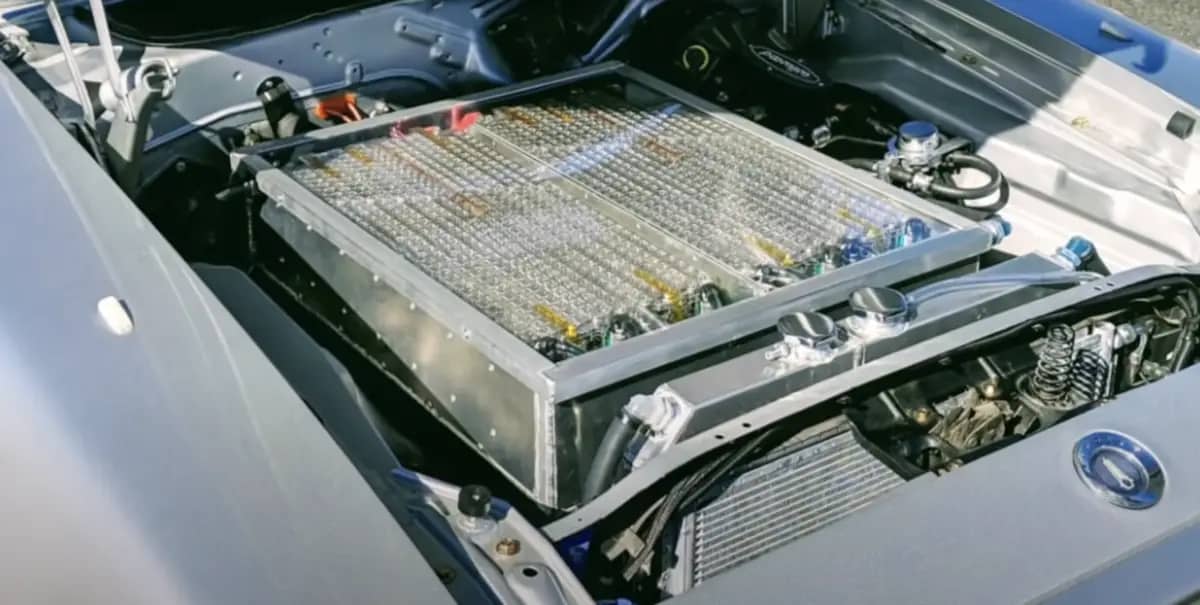NMC (Lithium Nickel Manganese Cobalt Oxide) and LFP (Lithium Iron Phosphate) are the two most popular lithium-ion battery chemistries at the moment.
Key things to note about NMC and LFP batteries:
- Both NMC and LFP batteries are types of lithium-ion batteries.
- Nickel manganese cobalt (NMC) batteries contain a cathode, made of a combination of nickel, manganese, and cobalt, and work great as a home solar storage option.
- Lithium iron phosphate (LFP) batteries have a lithium iron phosphate cathode that gives the batteries a longer lifespan and increased safety without sacrificing performance.
What is a lithium-ion battery and how does it work?
There are four main components of a lithium battery that you need to know about:
- The electrolyte, which contains the lithium ions
- The separator, allows lithium ions to flow through the battery while preventing the movement of electrons
- The cathode, where lithium ions are stored until the battery is charged
- The anode, where lithium ions are stored until the battery discharges
When the battery is being charged, the lithium ions flow through the electrolyte from the cathode to the anode. Then when the battery is being used, the ions flow from the anode, back to the cathode.
Each option has its strengths and weaknesses, and the “best” option depends on the specific requirements and use case. Here’s a comparison:
- Energy Density: NMC batteries generally have a higher energy density than LFP batteries, which means they can store more energy per unit of volume or weight. This makes NMC batteries suitable for applications where space and weight are critical factors, like in electric vehicles (EVs) and portable electronic devices.
- Safety: LFP batteries are considered safer than NMC batteries due to their more stable chemical structure. LFP has higher thermal stability and is less prone to thermal runaway and combustion. This safety advantage makes LFP batteries popular for stationary energy storage systems and applications where safety is of utmost importance.
- Cycle Life: LFP batteries tend to have a longer cycle life compared to NMC batteries. They can endure a higher number of charge and discharge cycles before their capacity significantly degrades. This makes LFP batteries preferable for applications that require long-lasting and reliable energy storage, such as grid storage systems and certain industrial applications.
- Cost: Historically, LFP batteries have been cheaper to produce than NMC batteries. However, the cost difference between the two chemistries has been decreasing as technology advances and economies of scale come into play. The relative cost may vary depending on factors like production volume and raw material prices.
- Operating Temperature: NMC batteries typically have a wider operating temperature range compared to LFP batteries. NMC batteries can perform better in extreme temperatures, both hot and cold, which makes them suitable for use in a broader range of environments.
In summary, the choice between NMC and LFP batteries depends on the specific needs and priorities of the application. If high energy density and a wide operating temperature range are crucial, NMC batteries might be the better option. On the other hand, if safety and cycle life are top priorities, LFP batteries might be more appropriate. As technology continues to evolve, both chemistries are likely to improve further, blurring the distinctions between them. It’s always best to consider the specific requirements and consult with experts in the field before making a decision.









